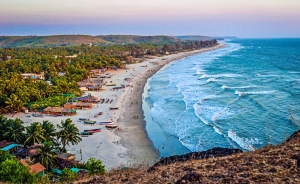Bulgaria location is in the southeast of Europe. Its border countries or territories are Romania to the north, Serbia and Macedonia to the west, Greece, and Turkey to the south, and finally, the Black Sea to the east.Bulgaria, a beautiful country on the edge of Eastern Europe. With diverse landscapes, welcoming people, and an immense cultural heritage, Bulgaria has all the assets of a magical country.Bulgaria location in Europe allows her to be a dynamic and multicultural country, rapidly expanding and endowed with a rich historical and cultural heritage, hotels, restaurants, and cultural or sports activities at an unbeatable price in Europe.Let's discover together, Bulgaria!
Climate
Because of Bulgaria location, it has a temperate continental climate, which mitigates the influence of the Mediterranean currents in the southern part of it, and the average annual temperature in the country is about 10.5 degrees Celsius. There is a wide variation in temperatures, it may decrease to reach about 38 degrees below zero degrees, as it may rise to about 45 degrees Celsius, and the annual rainfall rate in Bulgaria ranges from about 450 mm in the northeastern part to more than 1190 mm in the highest mountains. The snow falls on its lowlands during the period from mid-month October to mid-May, with an average of S. Wei ranges between 25 and 30 days of snow, the storms occur over the period between May and August.
The principal cities in Bulgaria
The country's largest cities are Sofia, the capital, Plovdiv, an industrial city in the center of the country and a major communications hub, and Varna, the main seaport.
Traveling to Bulgaria
When it comes to tourism, Bulgaria is one of the most beautiful and most visited countries. Bulgaria receives around 9 million tourists each year. They are mostly Russian, Romanian, German, and Scandinavian. They come to discover the landscapes and cultural monuments of Bulgaria and also to take advantage of its magnificent beaches.
How to get around Bulgaria?
Bus, metro, train, and coach are four means of public transportation used by locals to get around the country.Bus: There are different bus lines as well as routes covered by bus companies. They connect big cities and small cities to each other. The price of the trip is relatively low and proportional to the length of the route, for a comfortable trip.Train: Although there are express trains, the majority of trains are relatively slow but have the advantage of allowing you to enjoy the landscape and to stop in small villages that you would not necessarily have had the idea of visiting otherwise. The rates are quite attractive. The slightly more expensive night trains have sleepers, a good way to save a hotel night.Taxi: Taxi services are also available in small and large cities. The prices are reasonable. In contrast, in rural and remote areas, drivers offering taxi services are extremely rare.Car: It is the only real means of transport to visit deep Bulgaria, to reach its isolated monasteries and its most beautiful natural areas. You can use a GPS navigation app or a good map to get around easily.
Related: The most beautiful country in the world
What to visit in Bulgaria?
Pirin National Park
It is the most beautiful nature reserve in Bulgaria and is listed as a UNESCO World Heritage Site. The park covers a karst region, typical of the Balkans, where the water seeping into the basement has long dug the limestone plateaus at the origin of the mountainous reliefs, cliffs, and numerous caves of the massif. Vast coniferous forests spread across the valleys, gradually being replaced by high alpine lawns.
Alexander Nevsky Cathedral
It is a landmark and emblematic monument of Sofia, located in the heart of the city. The cathedral is one of the principal tourist sites in the capital and was proclaimed a Monument of Culture on September 12, 1924.
Rila Monastery
In the heart of Rila Mountain, located in southwestern Bulgaria, the Rila Monastery is one of the must-see places in the country.Located just 100 km from Sofia, it is the main and largest Orthodox symbol of the country.
The Assumption Cathedral
It is the iconic cathedral of the Bulgarian city of Varna. It should be noted that Varna is located in the east of the country, and it is the third city of the country by its population. The Assumption Cathedral is the largest in the city. It is very easy to find it because it is right in the center of the city in the place of Kiril and Metodii. You will be fascinated by the beauty of its sumptuous decor, its frescoes, its icons, and its stained glass windows.
The snail house
The snail house in Sofia is in the top ranking of the strangest buildings in the world. It is located in the upscale Simeonovo district. The snail house is considered a very special building and its construction lasted ten years; it is similar to a snail. It is characterized by its attractive bright colors that bring happiness and comfort to those who visit it.
Stob pyramids
These are amazing rock formations due to a natural phenomenon. situated not far from the village of Stob, in the Blagoevgrad region in southwestern Bulgaria, the natural pyramids of Stob are among the most popular Bulgarian sites for tourists.
- What to know about Washington District of Columbia?
- What are the important tips to travel to Australia?
- Tourism in the Netherlands and the most important sites
- Tourism in Ukraine and the most important monuments
- An organized travel to Brazil inspiration and advice
Originally published on Live Positively.






